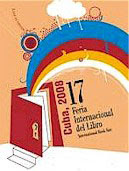 |
| click to enlarge |
@lashwatson
for Cynthia Leitich Smith's Cynsations
As I finished writing my second YA novel, I worried that my writing was getting stagnant.
What if I was learning bad habits that I would repeat through all of my future novels?
In order to glean some knowledge about my writing, I completed grammatical analyses on the first chapters of works by some of my favorite authors (Jane Austen, Ernest Hemingway, Barbara Kingsolver, David Levithan, Rainbow Rowell, and J.K. Rowling), and on my own novel.
I calculated percentages of sentences that begin with a subject, adverb, etc. I also looked at percentages of sentence type used: fragments, complex sentences, etc.
Here’s what I learned:
When reading your manuscript straight through for errors, highlighting different parts of speech individually (nouns, verbs, adverbs…) is an excellent editing method. This is how I started the project, and while it didn’t teach me much about my writing, scanning it piecemeal made the text pop in a different way. I discovered a dozen small errors and typos that I and my writing group had not yet found (in the first 50 pages alone).
Simplicity is okay. Forty-five percent of all my sentences are simple. I start 63 percent of my sentences with subjects. At first I was sure this was too high. But these numbers are actually pretty average compared to my favorite authors.
Levithan had the highest percentages of simple sentences and of sentences beginning with subjects (65%), but his writing is still some of the most poetic, jazzy, and prismatic writing I’ve read. Maybe this is because of the many gorgeous participial phrases in the middle or at the end of his sentences.
Similarly, Rowell’s writing gets more interesting (lots of fragments composed of participial phrases) whenever the protagonist waxes nostalgic about his girlfriend. Much like Levithan, her fragments make seemingly small, subtle emotional steps that work.
 |
| click to enlarge |
Complexity is also okay. One myth among young writers is that long sentences are always run-on sentences. This is untrue.
Take Hemingway, who is surprisingly complex. Because of his reputation as a straightforward, clear writer, I expected him to score high in fragments, but he had the least of anyone: only 2.2%.
His complex sentences were also the most complex of any I analyzed. Compared to writers like Levithan and Rowell, Hemingway often covers more ground (years, literally) with longer, more complex, and exceptionally clear sentences.
Use a range of tools. As far as sentence starters, Rowling definitely uses the widest range of tools. It’s probably not a coincidence that her varied writing has captivated children and adults alike.
Don’t focus too much on statistics. Initially, I thought that the best writing would have the greatest variation. But some sentence starters and structures work better depending on the author’s voice and the novel’s contents; Hemingway and Kingsolver, for example, punctuate their long, complex sentences with short, punchy ones. This may not make the most interesting graph, but it sets their voices apart and makes for great fiction.
My sample size is admittedly small. I’m only looking at first chapters, and there’s plenty more to learn. But my brain hurts from too much data entry, and the boarding school from my third novel beckons.
 |
| click to enlarge |
 |
| click to enlarge |
Add a Comment







You say, "Surprising to me was the literacy campaign, which Castro initiated in 1961. It is reported that "eleven months later, 707,212 people had learned to read and had written letters to President Castro to prove it and say thank you.""
John Derbyshire was right: "Wherever there is a jackboot stomping on a human face there will be a well-heeled Western liberal to explain that the face does, after all, enjoy free health care and 100 percent literacy."